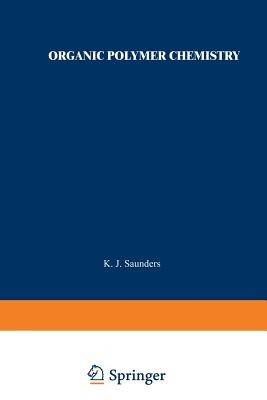
- We will send in 10–14 business days.
- Author: K J Saunders
- Publisher: Springer
- Year: 2013
- Pages: 473
- ISBN-10: 9401725063
- ISBN-13: 9789401725064
- Format: 15.2 x 22.9 x 2.5 cm, softcover
- Language: English
- SAVE -10% with code: EXTRA
Reviews
Description
This book deals with the organic chemistry of polymers which find technological use as adhesives, fibres, paints, plastics and rubbers. For the most part, only polymers which are of commercial significance are considered and the primary aim of the book is to relate theoretical aspects to industrial practice. The book is mainly intended for use by students in technical institutions and universities who are specializing in polymer science and by graduates who require an introduction to this field. Several excellent books have recently appeared dealing with the physical chemistry of polymers but the organic chemistry of polymers has not received so much attention. In recognition of this situation and because the two aspects of polymer chemistry are often taught separately, this book deals specifically with organic chemistry and topics of physical chemistry have been omitted. Also, in this way the book has been kept to a reasonable size. This is not to say that integration of the two areas of polymer science is undesirable; on the contrary, it is of the utmost importance that the inter-relationship should b appreciated. I wish to record my thanks to my colleagues with whom I have had many helpful discussions, particularly Mrs S. L. Radchenko. I also thank Miss E. Friesen for obtaining many books and articles on my behalf and Mr H. Harms for encouragement and assistance. I am also grateful to Mrs M. Stevens who skilfully prepared the manuscript. Department of Chemical and Metallurgical Technology, Ryerson Polytechnical Institute, K. J. S.
EXTRA 10 % discount with code: EXTRA
The promotion ends in 18d.07:56:06
The discount code is valid when purchasing from 10 €. Discounts do not stack.
- Author: K J Saunders
- Publisher: Springer
- Year: 2013
- Pages: 473
- ISBN-10: 9401725063
- ISBN-13: 9789401725064
- Format: 15.2 x 22.9 x 2.5 cm, softcover
- Language: English English
This book deals with the organic chemistry of polymers which find technological use as adhesives, fibres, paints, plastics and rubbers. For the most part, only polymers which are of commercial significance are considered and the primary aim of the book is to relate theoretical aspects to industrial practice. The book is mainly intended for use by students in technical institutions and universities who are specializing in polymer science and by graduates who require an introduction to this field. Several excellent books have recently appeared dealing with the physical chemistry of polymers but the organic chemistry of polymers has not received so much attention. In recognition of this situation and because the two aspects of polymer chemistry are often taught separately, this book deals specifically with organic chemistry and topics of physical chemistry have been omitted. Also, in this way the book has been kept to a reasonable size. This is not to say that integration of the two areas of polymer science is undesirable; on the contrary, it is of the utmost importance that the inter-relationship should b appreciated. I wish to record my thanks to my colleagues with whom I have had many helpful discussions, particularly Mrs S. L. Radchenko. I also thank Miss E. Friesen for obtaining many books and articles on my behalf and Mr H. Harms for encouragement and assistance. I am also grateful to Mrs M. Stevens who skilfully prepared the manuscript. Department of Chemical and Metallurgical Technology, Ryerson Polytechnical Institute, K. J. S.


Reviews